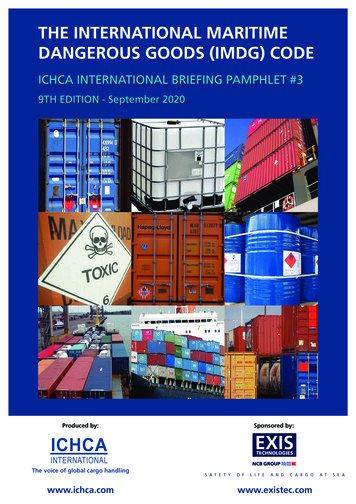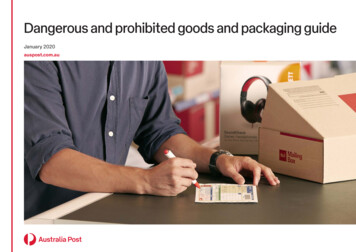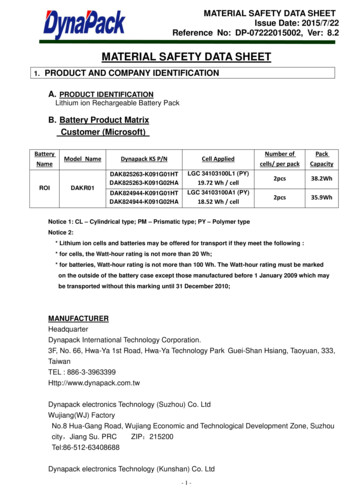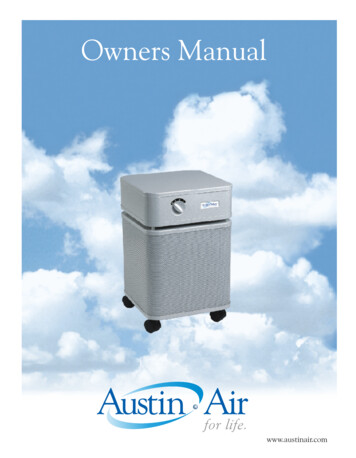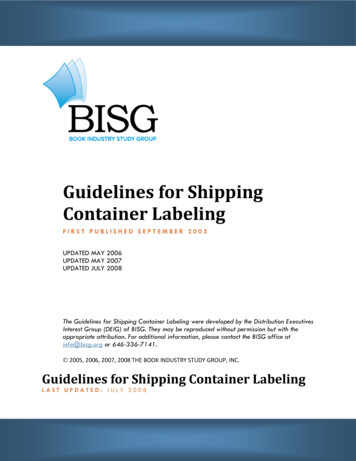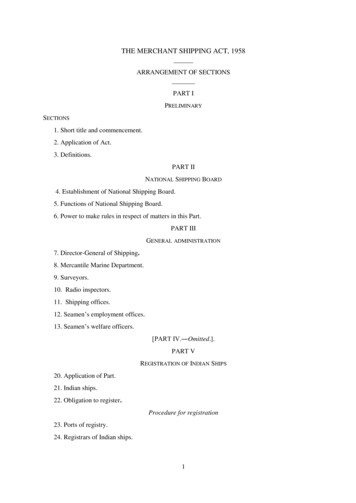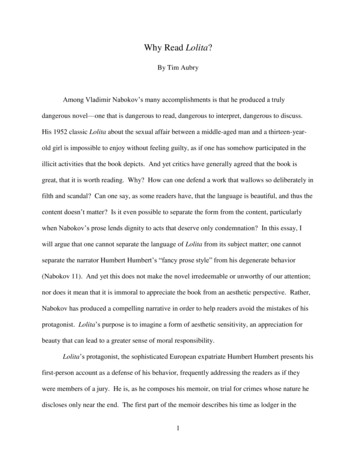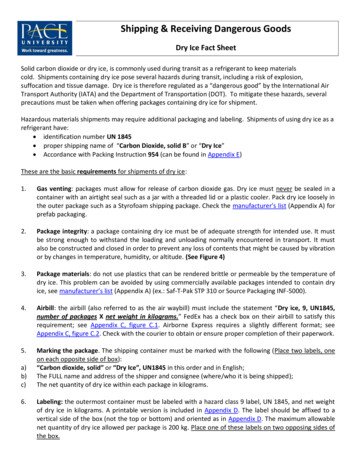
Transcription
Shipping & Receiving Dangerous GoodsDry Ice Fact SheetSolid carbon dioxide or dry ice, is commonly used during transit as a refrigerant to keep materialscold. Shipments containing dry ice pose several hazards during transit, including a risk of explosion,suffocation and tissue damage. Dry ice is therefore regulated as a “dangerous good” by the International AirTransport Authority (IATA) and the Department of Transportation (DOT). To mitigate these hazards, severalprecautions must be taken when offering packages containing dry ice for shipment.Hazardous materials shipments may require additional packaging and labeling. Shipments of using dry ice as arefrigerant have: identification number UN 1845 proper shipping name of “Carbon Dioxide, solid B” or “Dry Ice” Accordance with Packing Instruction 954 (can be found in Appendix E)These are the basic requirements for shipments of dry ice:1.Gas venting: packages must allow for release of carbon dioxide gas. Dry ice must never be sealed in acontainer with an airtight seal such as a jar with a threaded lid or a plastic cooler. Pack dry ice loosely inthe outer package such as a Styrofoam shipping package. Check the manufacturer’s list (Appendix A) forprefab packaging.2.Package integrity: a package containing dry ice must be of adequate strength for intended use. It mustbe strong enough to withstand the loading and unloading normally encountered in transport. It mustalso be constructed and closed in order to prevent any loss of contents that might be caused by vibrationor by changes in temperature, humidity, or altitude. (See Figure 4)3.Package materials: do not use plastics that can be rendered brittle or permeable by the temperature ofdry ice. This problem can be avoided by using commercially available packages intended to contain dryice, see manufacturer’s list (Appendix A) (ex.: Saf-T-Pak STP 310 or Source Packaging INF-5000).4.Airbill: the airbill (also referred to as the air waybill) must include the statement “Dry ice, 9, UN1845,number of packages X net weight in kilograms.” FedEx has a check box on their airbill to satisfy thisrequirement; see Appendix C, figure C.1. Airborne Express requires a slightly different format; seeAppendix C, figure C.2. Check with the courier to obtain or ensure proper completion of their paperwork.5.Marking the package. The shipping container must be marked with the following (Place two labels, oneon each opposite side of box):“Carbon dioxide, solid” or “Dry Ice”, UN1845 in this order and in English;The FULL name and address of the shipper and consignee (where/who it is being shipped);The net quantity of dry ice within each package in kilograms.a)b)c)6.Labeling: the outermost container must be labeled with a hazard class 9 label, UN 1845, and net weightof dry ice in kilograms. A printable version is included in Appendix D. The label should be affixed to avertical side of the box (not the top or bottom) and oriented as in Appendix D. The maximum allowablenet quantity of dry ice allowed per package is 200 kg. Place one of these labels on two opposing sides ofthe box.
Note the following recommendations when packaging and labeling dry ice shipments: Do not write “specimens” or “diagnostic specimens” on the box. Diagnostic specimens aresubject to specific packaging requirements and there should not be anymisunderstanding about your shipment. Diagnostic specimens, in shipping terminology,are materials that may be infectious to humans or animals. If you think your samplesmight be infectious, contact the Pace University EH&S Office. Reusing boxes. If you choose to reuse a box, completely obliterate all unnecessary markingsuch as hazard labels, addresses, FedEx (or other courier) labels and barcodes. Usecaution if reusing a box that has been used to ship infectious material or diagnosticspecimens. Only reuse a box if you can personally verify it is not contaminated and itsintegrity is intact. A box should not be reused if it is torn, cut, stained, or if theinsulation is cracked or broken. Secure your inner package in such a way that when the dry ice sublimates, it will not movefreely inside of the insulated box. You may want to wedge the package in place withcardboard or styrofoam. Fragile containers such as glass tubes or vials should bewrapped with cushioning material. Shipments are generally recommended to contain 5-10 pounds (2.27-4.54 kg) of dry ice per24 hours. Refer to your package manufacturer’s recommendations. Makearrangements with your consignee to make sure your package will be received on itsintended delivery date. Take into account local holidays or closings that might delaypackage receipt. Dry ice shipments can be made with FedEx (Refer to Fedex How to Pack manual, pages 1113 on general information on dry ice use in perishable shipments.) and DHL. UPS andthe U.S. Postal Service have extremely restrictive policies concerning shipments ofhazardous materials; do not ship dry ice with UPS or the U.S. Postal Service.EH&S Contact Information:Phone: (914)923-2818Fax: (914) onmental-health-and-safety2
Appendix: Manufacturers of Dry Ice Shipping ContainersAir Sea Atlanta1234 Logan CircleAtlanta, GA 30318(880) 351-8600http://www.airseaatlanta.comAll-Pak, Inc.Corporate One West1195 Washington PikeBridgeville, PA 15017(800) 245-2283http://www.all-pak.comCARGOpak Corporation3215-A Wellington CourtRaleigh, NC 27615(800) 266-0652http://www.cargopak.comDG Supplies, Inc.5 Boxal DriveCranbury, NJ 08512(800) 347-7879http://www.dgsupplies.comHAZMATPAC, Inc.5301 Polk St., Bldg. 18Houston, TX 77023(800) 923-9123http://www.hazmatpac.comInmark, Inc.220 Fisk Drive S.W.Atlanta, GA 30336-0309(800) 646-6275http://www.inmarkinc.comPackage examples:SAFT-T-PAK: STP 3100Source Packaging: INF-50003Polyfoam PackersCorporation2320 S. Foster AvenueWheeling, IL 60090(888) 765-9362http://www.polyfoam.comSAF-T-PAK, Inc.10807-182 Street, EdmontonAlberta, Canada, T5S 1J5(800) 814-7484http://www.saftpak.comSource Packaging of NewEngland, Inc.405 Kilvert StreetWarwick, RI 02886(800) 200-0366http://www.sourcepak.com
Appendix B: Sample image of typical Dry Ice Shipping Container.The typical Dry Ice shipping container features an internal foam core with cardboard box exterior. DO NOTtape the Styrofoam top or the box top on tightly. Taping should be secure but NOT air tight.4
Appendix C: Sample Airbill or Air WaybillFigure C.1. FedEx Airbill. Highlighted area properly documents 1 box containing 6 kg of dry ice.Figure C.2. Airborne Express Airbill. Highlighted area shows format required for 1 box containing 5kg of dry ice.UN1845, Dry Ice, 9, III, 1 X 5 kg5
Appendix D. Dry Ice Shipping LabelThe label below should print with the proper dimensions of a class 9 hazard label (minimum dimensions: 100mm on a side). Cut around the outside border of the label and affix it a vertical side of the box (not the top orbottom), oriented as shown below. Many printer inks run when exposed to even small amounts of water, suchas rain or snow. Therefore, when using this label, cover with clear plastic tape after filling in the weight of dryice.6
Appendix E. PACKING INSTRUCTION 954 – Class 9 – Miscellaneous Dangerous GoodsSTATE VARIATION: BEG-05 SAG-04 USG-12OPERATOR VARIATIONS: BD-01 CA-08 CO-09 CS-09 HP-02 IC-08 KE-06 US-02 VN-11This instruction applies to UN 1845 on passenger and cargo aircraft and CAO. The General Packing Requirements of 5.0.2 must bemet.Carbon dioxide, solid (dry ice) in packages, when offered for transport by air, must be in packaging designed andconstructed to permit the release of carbon dioxide gas and to prevent a build-up of pressure that could rupture the packaging.Arrangements between shipper and operator(s) must be made for each shipment, to ensure ventilation safety procedures arefollowed.The Shipper's Declaration requirements of Subsections 8.1 and 10.8.1 are only applicable when the Carbon dioxide, solid (dry ice) isused as a refrigerant for dangerous goods that require a Shipper's Declaration.When a Shipper's Declaration is not required, the following information, as required by 8.2.3 for the Carbon dioxide, solid(dry ice), should be contained in the “Nature and Quantity of Goods” box on the air waybill: UN 1845;proper shipping name (Dry ice or Carbon dioxide, solid);Class 9;the number of packages; andthe net quantity of dry ice in each package.The net weight of the Carbon dioxide, solid (dry ice) must be marked on the outside of the package.Dry ice used as a refrigerant for other than dangerous goods may be shipped in a unit load device or other type of palletprepared by a single shipper provided that the shipper has made prior arrangements with the operator. In such case, the unit loaddevice, or other type of pallet must allow the venting of the carbon dioxide gas to prevent a dangerous buildup of pressure. Theshipper must provide the operator with written documentation stating the total quantity of the dry ice contained in the unit loaddevice or other type of pallet.Notes1.2.3.Refer to the relevant airline's loading procedures for Carbon dioxide, solid (dry ice) limitations.For Air Waybill requirements see 8.2.3. For loading instructions see 9.3.12.For cooling purposes, an overpack may contain Carbon dioxide, solid (dry ice), provided that the overpack meets therequirements of Packing Instruction 904.Dangerous Goods Regulations 48th Edition 20077
(dry ice), should be contained in the "Nature and Quantity of Goods" box on the air waybill: UN 1845; proper shipping name (Dry ice or Carbon dioxide, solid); Class 9; the number of packages; and the net quantity of dry ice in each package. The net weight of the Carbon dioxide, solid (dry ice) must be marked on the outside of the package. .

